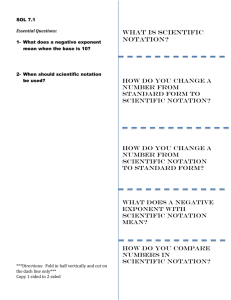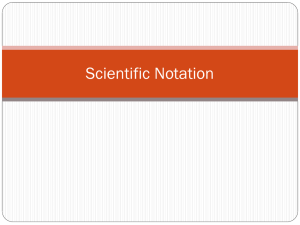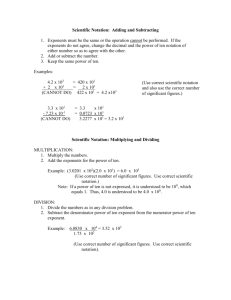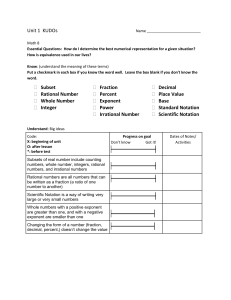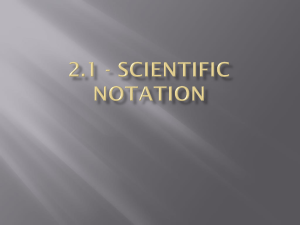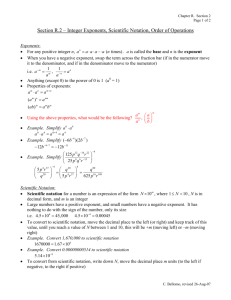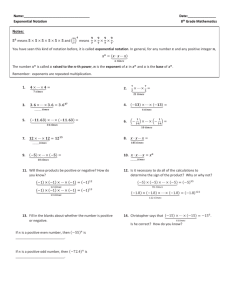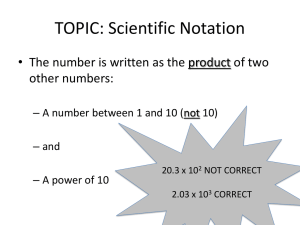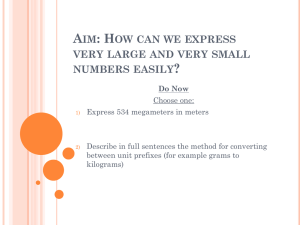Exponents and Scientific Notation Vocabulary
advertisement
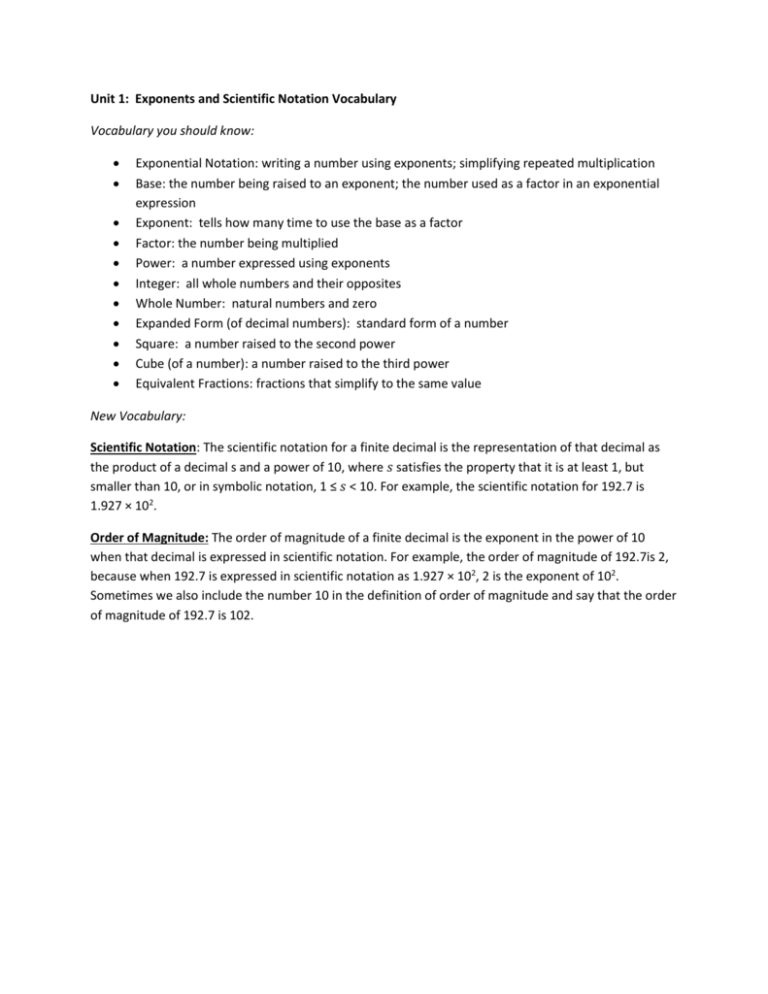
Unit 1: Exponents and Scientific Notation Vocabulary Vocabulary you should know: Exponential Notation: writing a number using exponents; simplifying repeated multiplication Base: the number being raised to an exponent; the number used as a factor in an exponential expression Exponent: tells how many time to use the base as a factor Factor: the number being multiplied Power: a number expressed using exponents Integer: all whole numbers and their opposites Whole Number: natural numbers and zero Expanded Form (of decimal numbers): standard form of a number Square: a number raised to the second power Cube (of a number): a number raised to the third power Equivalent Fractions: fractions that simplify to the same value New Vocabulary: Scientific Notation: The scientific notation for a finite decimal is the representation of that decimal as the product of a decimal s and a power of 10, where 𝑠 satisfies the property that it is at least 1, but smaller than 10, or in symbolic notation, 1 ≤ 𝑠 < 10. For example, the scientific notation for 192.7 is 1.927 × 102. Order of Magnitude: The order of magnitude of a finite decimal is the exponent in the power of 10 when that decimal is expressed in scientific notation. For example, the order of magnitude of 192.7is 2, because when 192.7 is expressed in scientific notation as 1.927 × 102, 2 is the exponent of 102. Sometimes we also include the number 10 in the definition of order of magnitude and say that the order of magnitude of 192.7 is 102.


